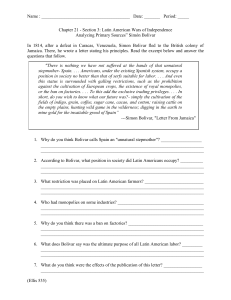Latin American Revolutions
advertisement
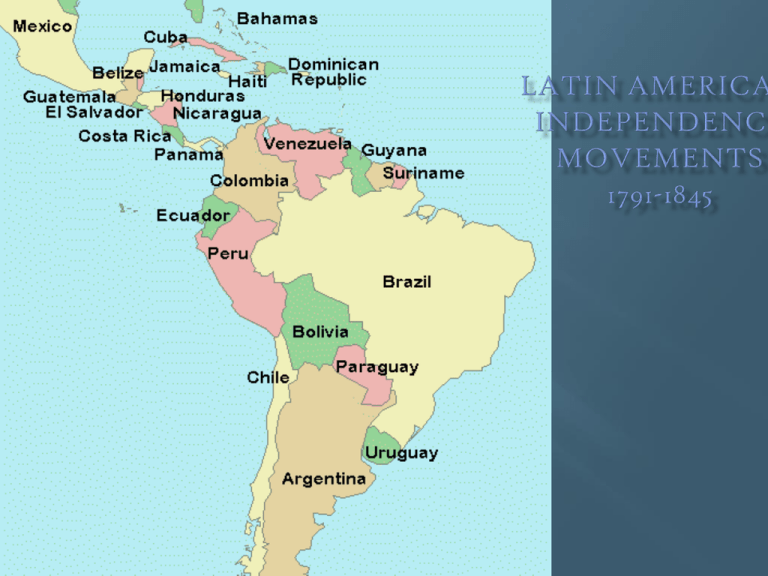
Long-Term Causes Immediate Causes • People of Latin America resent • European domination of Latin colonial rule and social injustices America • Spread of Enlightenment ideas • Revolutionary leaders emerge • American and French revolutions • Napoleon invades Spain and ousts • Growth of nationalism in Latin Spanish king America Immediate Effects Long-Term Effects • Toussaint L‘Ouverture leads slave revolt in Haiti • Attempts made to rebuild economies • Bolívar, San Martín, and others lead successful revolts in Latin America • 18 separate republics set up • Colonial rule ends in much of Latin America • Continuing efforts to achieve stable democratic governments and to gain economic independence Latin American Social Classes Peninsulares : men born in Spain or Portugal who held highest offices and important military and political positions Creoles : Spaniards born in the Latin American colonies who were officers in army, but not in government. They controlled much of the land and business in the colonies, but they deeply resented power of the peninsulares. Mestizos: made up the majority of the society because it was mixed European and Indian. They worked as servant to the peninsulares and Creoles and as plantation overseers and farmhands. Mulatto-European and African mixed ancestry Native Americans/Africans were the lowest society group but also the largest. They were not known as citizens but did much labor. 3 What Caused Discontent in Latin America? By the late 1700s, the revolutionary fever that gripped Western Europe had spread to Latin America. There, discontent was rooted in the social, racial, and political system that had emerged during 300 years of Spanish rule. Peninsulares were those born of Spanish parents in Spain; therefore, they had the most wealth, education, & status *Creoles resented their second-class status. Mestizos and mulattoes were angry at being denied the status, wealth, and power available to whites. Native Americans suffered economic misery under the Spanish. Enslaved Africans who worked on plantations longed for freedom. Haiti Toussaint L’Ouverture First to Gain Independence! In 1791, Toussaint L’Ouverture led slaves in revolt. By 1798, enslaved Haitians had been freed. In 1802, Napoleon sent an army to recapture Haiti. They failed (yellow fever). Napoleon’s forces agreed to a truce, or temporary peace (arrest Toussaint- dies in French prison 1803). In 1804, Haitian leaders declared independence. Look Familiar…??? • 1808- Napoleon controlled Spainthis allowed revolutionary leaders to take advantage of Spain’s weakness. • 1810- Simon Bolivar leads revolutions against Spanish rule for over 10 years. Came to be called “The Liberator” and “The George Washington of South America.” • During this time Bolivar liberated Venezuela, Colombia, Ecuador, Peru, and Bolivia. • Bolivar then joined forces with Jose de San Martin- who had already liberated Argentina and Chili from Spanish rule. • Bolivar’s goal of creating a unified South American country did not happen. Rivalries and cultural differences resulted in the creation of many different countries. • Brazil gained its independence without bloodshed. • In 1822 Brazil declared its independence from Portugal. MEXICO Father Miguel Hidalgo was a Mexican priest who was the leader of the Mexican war for Independence. Hidalgo’s goals were political freedom, an end to slavery, and improvements to living conditions for Mexico’s poor and revolt was the only way to bring change Father Hidalgo raised armies of free Mexicans and swept through parts of Mexico and killed many Spaniards. Mexico gained independence from Spain in 1821.
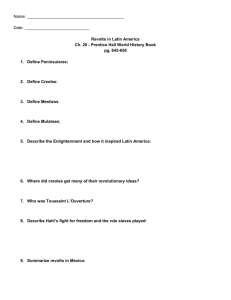
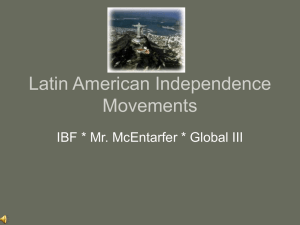

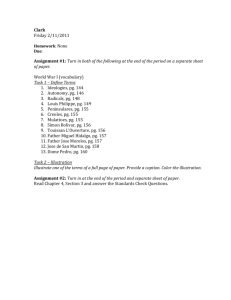
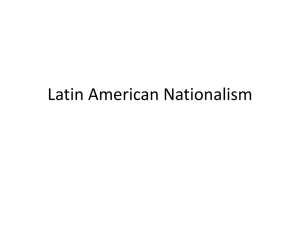
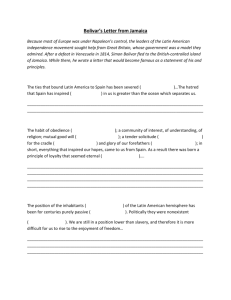
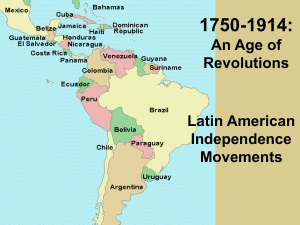
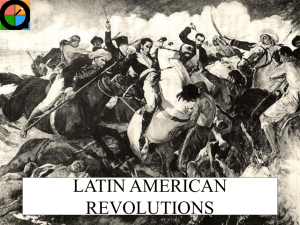
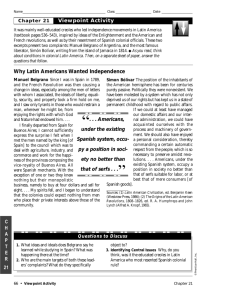

![Lesson 4.3 [WH] - MKHS](http://s3.studylib.net/store/data/008422552_1-b5d54a87b240306642b68067bfe9553e-300x300.png)
